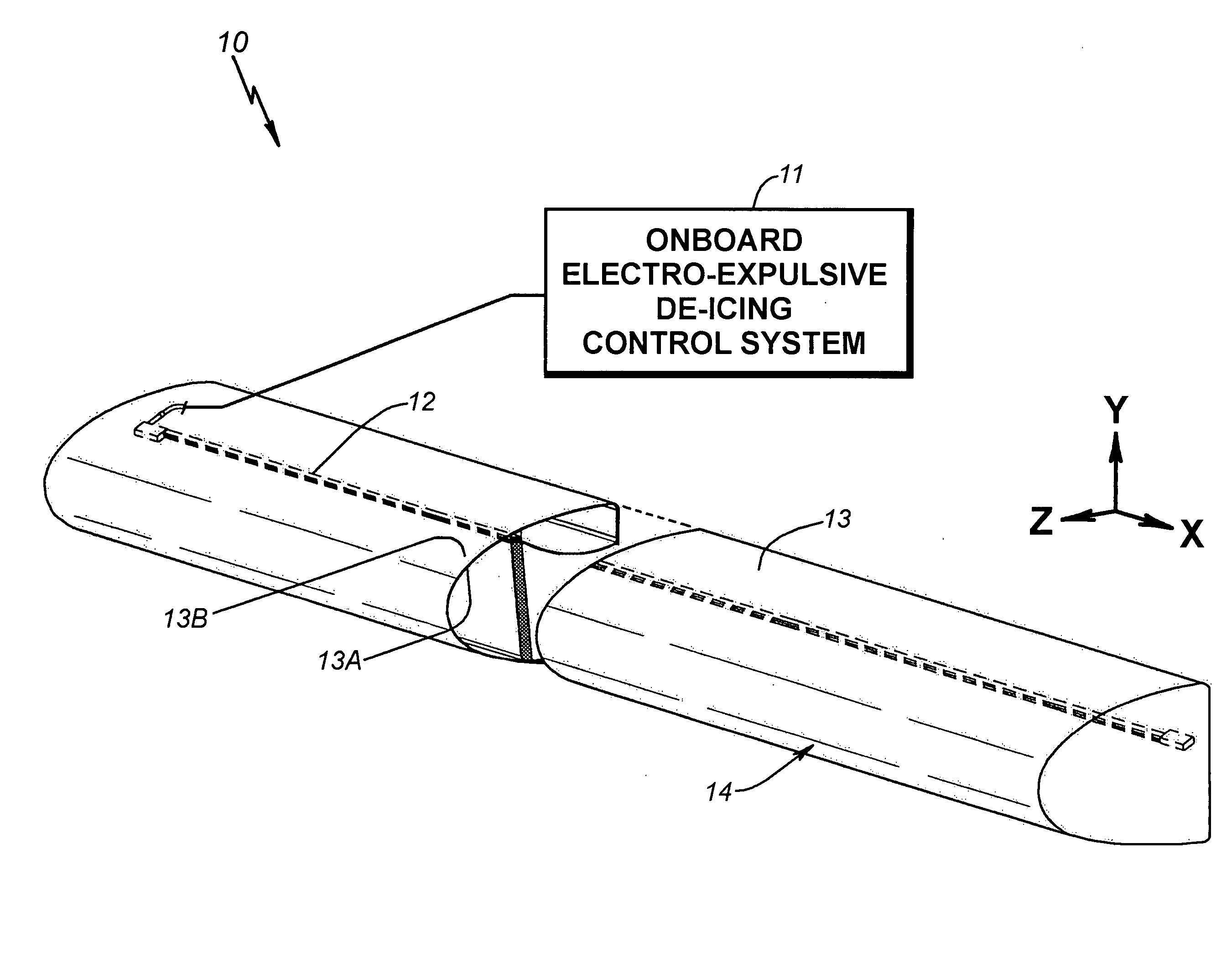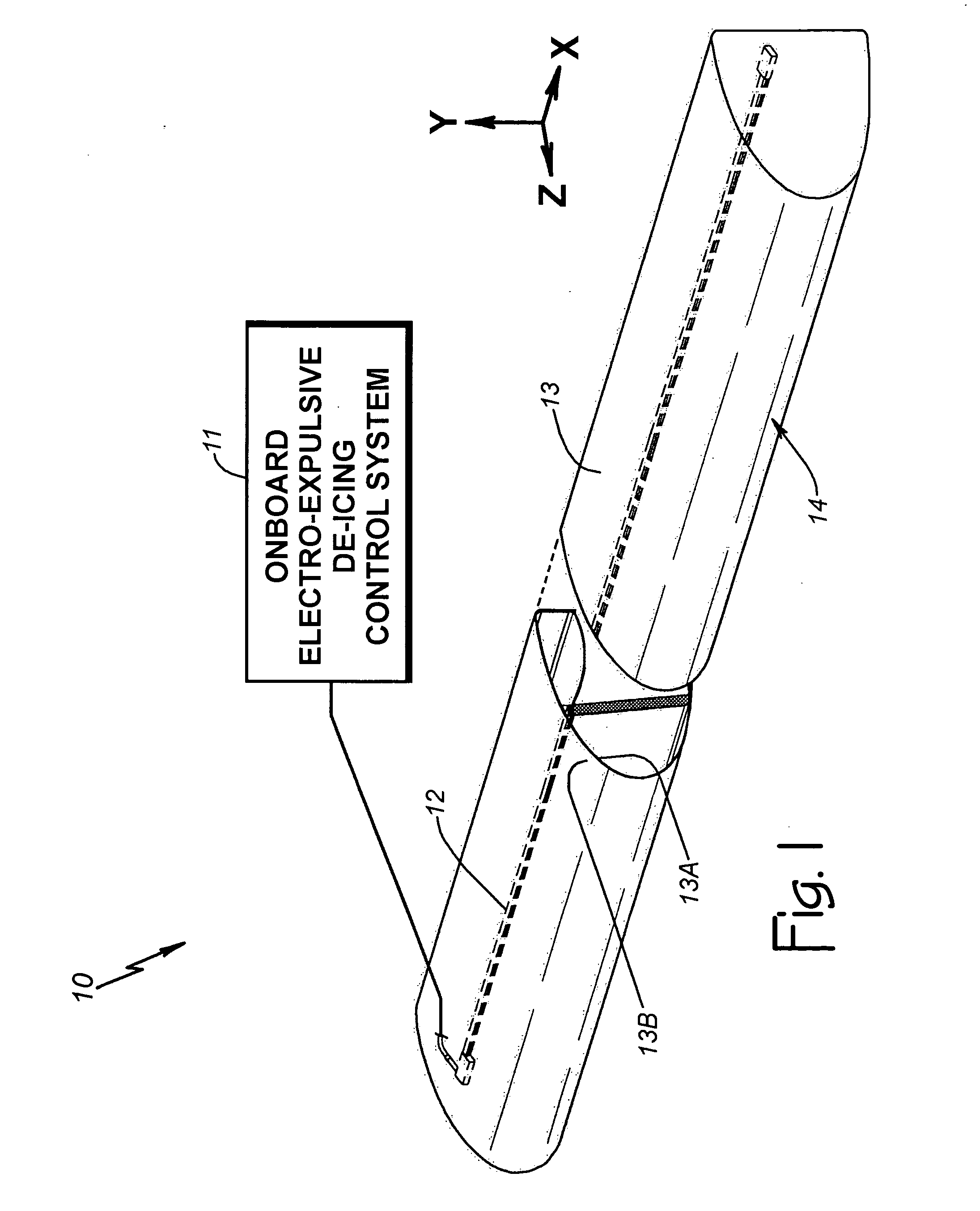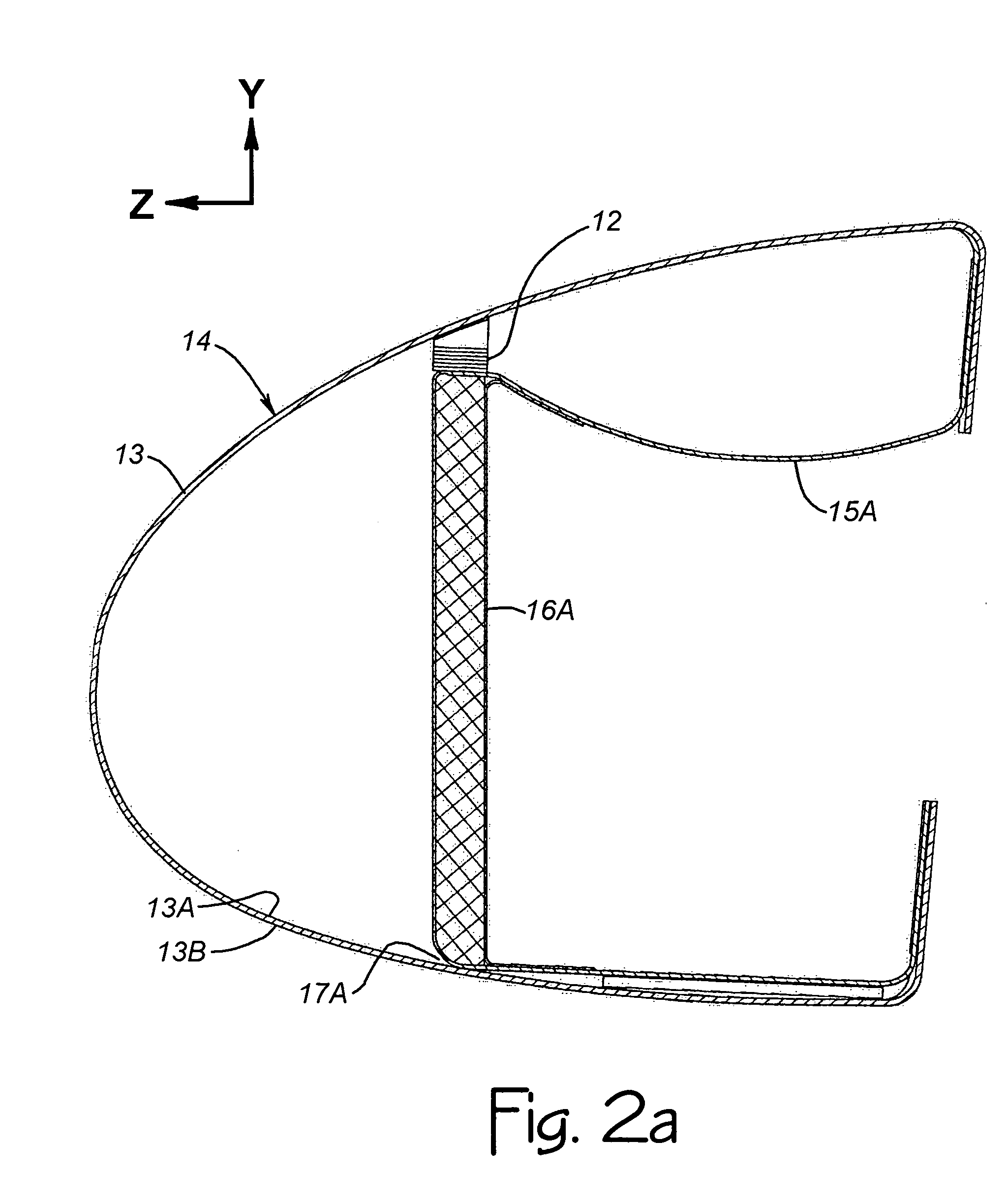Electro-expulsive de-icing system for aircraft and other applications
a de-icing system and electric pulse technology, applied in the field of in-flight aircraft de-icing, can solve the problems large force, de-icing ice accumulation on the skin, etc., and achieve the effects of enhancing performance, and reducing the risk of de-icing shock waves
- Summary
- Abstract
- Description
- Claims
- Application Information
AI Technical Summary
Benefits of technology
Problems solved by technology
Method used
Image
Examples
second embodiment
[0043]FIG. 5 shows an apparatus constructed according to the invention. It is identified as an actuator 40, and it is similar in many respects to the actuator 30. For convenience, reference numerals designating parts of the actuator 40 are increased by ten over those designating similar or related parts of the actuator 30. The actuator 40 includes first and second subassemblies 41 and 42, connectors 43-47 that interconnect the ends of multiple electrically conductive elements to form a loop, and wires 48 and 49 that connect the actuator 40 to an onboard electronic control system (not shown). Unlike the actuator 30, however, the connectors 43-47 of the actuator 40 are sections of conductive ribbon in U-shaped configurations (e.g., similar in width and thickness to the ribbon composition of the electrically conductive elements of the first and second subassemblies 41 and 42). Each of the U-shaped connectors 43-47 includes two elongated legs connected to a mid portion, with the elongat...
third embodiment
[0044]FIG. 6 shows an apparatus constructed according to the invention. It is identified as an actuator 50, and it is similar in many respects to the actuator 40. For convenience, reference numerals designating parts of the actuator 50 are increased by ten over those designating similar or related parts of the actuator 40. The actuator 50 includes first and second subassemblies 51 and 52, and connectors 53-55 that interconnect the ends of multiple electrically conductive elements to form a loop. Counterparts of the connectors 46 and 47 and the wires 48 and 49 are not shown in FIG. 6 for illustrative convenience.
[0045]Unlike the actuator 40 where the axes of elongation of the connectors 43-47 are parallel to the direction of elongation of the electrically conductive loop, the axes of elongation of the connectors 53-55 in FIG. 6 are oriented so that their axes of elongation are perpendicular to the direction of elongation of the electrically conductive loop. That connector orientation...
fourth embodiment
[0047]FIG. 8 shows an actuator assembly constructed according to the invention. It is identified as an actuator 70 and it includes first and second subassemblies 71 and 72 such that each has four electrically conductive elements. In addition, the subassemblies 71 and 72 include encapsulated end portions 71A, 71B, 72A, and 72B connected by connectors, such as, for example, a connector 73 connecting two of the elements. Unlike the encapsulated ends of prior art actuators, the encapsulated end portions 71A, 71B, 72A, and 72B do not restrict movement of the subassemblies 71 and 72 relative to each other.
[0048]FIGS. 9, 10, and 11 show actuators installed in the forward end portions of jet engine intakes. In FIG. 9, first and second actuators 81 and 82 installed in a forward portion 83 of a jet engine intake. The actuators 81 and 82 are generally similar to the actuators 30, 40, 50 and 70 already described, each having loop-forming first and second subassemblies arranged to move relative ...
PUM
 Login to View More
Login to View More Abstract
Description
Claims
Application Information
 Login to View More
Login to View More - R&D
- Intellectual Property
- Life Sciences
- Materials
- Tech Scout
- Unparalleled Data Quality
- Higher Quality Content
- 60% Fewer Hallucinations
Browse by: Latest US Patents, China's latest patents, Technical Efficacy Thesaurus, Application Domain, Technology Topic, Popular Technical Reports.
© 2025 PatSnap. All rights reserved.Legal|Privacy policy|Modern Slavery Act Transparency Statement|Sitemap|About US| Contact US: help@patsnap.com



